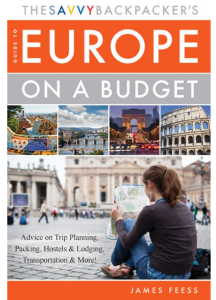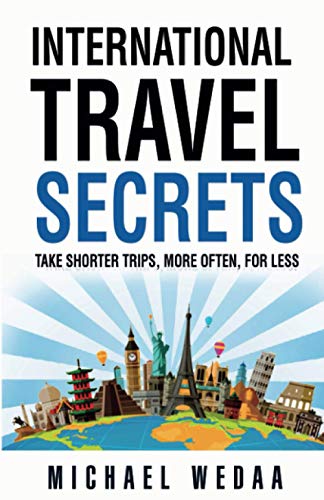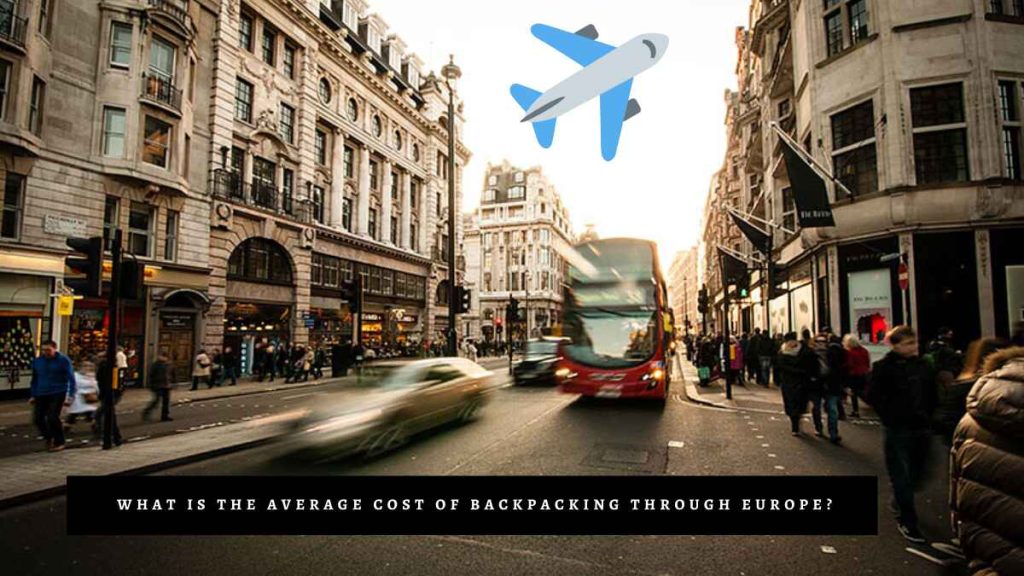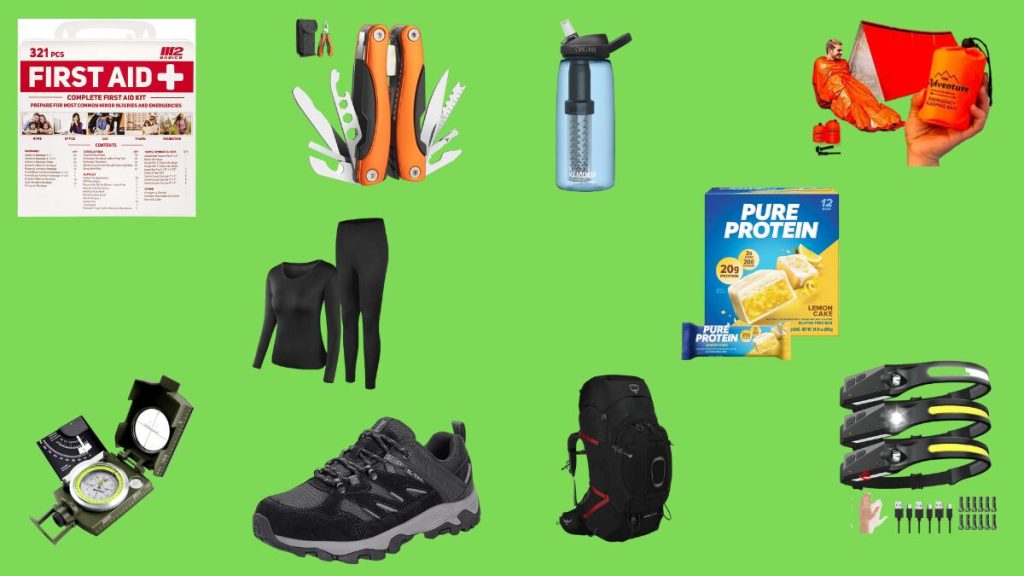Backpacking through Europe is an adventure of a lifetime, with its rich history, diverse culture, and stunning landscapes. However, as a budget traveler, it is crucial to have an idea of What is the average cost of backpacking through Europe? to make the most of your trip without breaking the bank.
In this article, we will explore the various expenses involved in backpacking through Europe, including accommodation, food and drink, transportation, entertainment, and other miscellaneous expenses. By the end of this article, you will have a clear idea of the average cost of backpacking through Europe and some budget-friendly tips to help you make the most of your trip.
how much does it cost to backpack europe
So, if you’re planning a backpacking trip through Europe and want to stay within your budget, read on to learn more “how much does it cost to backpack europe”.
The Savvy Backpacker’s Guide to Europe on a Budget

What is the average cost of backpacking through Europe
II. Accommodation
Europe offers a variety of accommodation options to suit every budget and preference. The most popular options for budget travelers include hostels, hotels, and Airbnbs.
A. Different types of accommodation available
Hostels are the go-to option for backpackers, as they are affordable and provide a social atmosphere. Hostels offer shared dormitory-style rooms or private rooms at a lower cost than hotels. They also provide amenities such as free Wi-Fi, communal kitchens, and laundry facilities.
Hotels offer private rooms with en-suite bathrooms and other amenities, such as room service and air conditioning, at a higher cost than hostels.
Airbnbs provide travelers with the opportunity to stay in a local’s home, providing a more authentic experience. They are often cheaper than hotels and provide amenities such as a kitchen and a living space.
B. Average cost of hostels, hotels, and Airbnbs in popular European cities
The cost of accommodation in Europe varies depending on the city and the type of accommodation. On average, hostels in popular European cities such as Paris, London, and Amsterdam cost between €20-€40 per night for a bed in a shared dormitory room. Private rooms in hostels cost around €60-€100 per night.
Hotels in popular European cities cost between €80-€200 per night, depending on the location and amenities provided. Airbnbs can cost between €50-€100 per night, with prices varying depending on the location and the type of accommodation.
C. Budget-friendly alternatives
There are also budget-friendly alternatives to traditional accommodation options. Couchsurfing, for example, is a platform that connects travelers with locals who offer a free place to stay in their homes. Camping is another option for budget travelers, with campsites located throughout Europe.
Accommodation can be one of the biggest expenses when backpacking through Europe. By considering different types of accommodation and budget-friendly alternatives, you can significantly reduce your expenses and make the most of your trip.
III. Food and Drink
When backpacking through Europe, food and drink expenses can quickly add up. However, there are ways to save money on meals without sacrificing quality or variety.
A. Cost of groceries and eating out
Grocery stores are available in all European cities, and buying groceries is a great way to save money on meals. Depending on the city and the type of food, groceries can cost between €20-€40 per week.
Eating out in restaurants and cafes can be expensive, but there are budget-friendly options available. Street food is a popular option, with delicious and affordable options available in cities such as Berlin, Budapest, and Lisbon.
B. Average price of a meal in popular European cities
The cost of meals in Europe varies depending on the city and the type of restaurant. On average, a meal in a budget restaurant costs between €10-€20, while a mid-range restaurant can cost between €20-€40 per meal.
C. Tips for saving money on food and drink
There are many ways to save money on food and drink while backpacking through Europe. Here are a few tips:
- Cook your meals: Hostels and Airbnbs often have kitchens where you can cook your meals, saving money on eating out.
- Buy groceries from local markets: Local markets offer fresh and affordable produce, meats, and bread.
- Avoid touristy areas: Restaurants in touristy areas often charge higher prices. Instead, look for restaurants frequented by locals.
- Drink tap water: In most European cities, tap water is safe to drink and can save you money on bottled water.
- Happy hour and lunch deals: Many restaurants and cafes offer happy hour and lunch deals, providing discounts on meals.
Food and drink expenses can be a significant cost when backpacking through Europe. By considering budget-friendly options and following the tips above, you can save money on meals and make the most of your trip.
International Travel Secrets

IV. Transportation
Europe offers a variety of transportation options for backpackers, including trains, buses, flights, and budget-friendly alternatives.
A. Different modes of transportation in Europe
Trains are a popular mode of transportation in Europe, with an extensive network connecting major cities and towns. Buses are also a budget-friendly option, with companies such as Flixbus and Eurolines offering affordable and comfortable rides throughout Europe. Flights are a faster option, especially for long-distance travel, with budget airlines such as Ryanair and EasyJet offering cheap flights between European cities.
B. Average cost of train, bus, and flight tickets
The cost of transportation in Europe varies depending on the mode of transport and the distance traveled. On average, train tickets cost between €30-€60 for a one-way journey, while bus tickets can cost between €10-€30. Flight prices vary depending on the airline and the distance traveled, with prices ranging from €30-€200 or more for a one-way ticket.
C. Budget-friendly transportation alternatives
There are budget-friendly alternatives to traditional transportation options. Hitchhiking is a popular option for adventurous travelers, although it can be unpredictable and potentially dangerous. BlaBlaCar is a car-sharing platform that connects drivers with passengers traveling to the same destination, providing an affordable and social alternative to traditional transportation. Cycling is also a great option for exploring cities and the countryside, with many cities offering bike rental services.
Transportation can be a significant cost when backpacking through Europe. By considering different modes of transportation and budget-friendly alternatives, you can save money on travel and make the most of your trip.
V. Entertainment and Activities
Europe is rich in history, culture, and natural beauty, providing backpackers with endless opportunities for entertainment and activities. Here’s what you need to know about the cost of popular tourist attractions and budget-friendly things to do in Europe.
A. Popular tourist attractions in Europe
Europe is home to numerous tourist attractions, including museums, galleries, historical sites, and natural wonders. Some of the most popular tourist attractions in Europe include the Eiffel Tower in Paris, the Colosseum in Rome, and the Anne Frank House in Amsterdam. These attractions often have admission fees, which can be a significant expense for backpackers.
B. Average cost of admission to museums, galleries, and other attractions
Admission fees for tourist attractions in Europe vary depending on the type of attraction and the popularity. On average, admission fees to museums and galleries range between €5-€20, while admission fees to historical sites and natural wonders can be more expensive. However, many attractions offer free admission on specific days or times, so it’s worth checking their websites for more information.
C. Free or budget-friendly things to do in Europe
There are plenty of free or budget-friendly things to do in Europe. For example, exploring local markets, parks, and neighborhoods can be a great way to experience the local culture without spending much money. Many cities also offer free walking tours, which provide insight into the city’s history and culture. Additionally, many museums and galleries offer free admission on specific days or times, so it’s worth doing some research before you go.
Entertainment and activities can be a significant cost when backpacking through Europe. By considering budget-friendly alternatives and taking advantage of free admission opportunities, you can save money on entertainment and activities and make the most of your trip.
VI. Miscellaneous Expenses
When backpacking through Europe, there are several miscellaneous expenses that can add up quickly. Here’s what you need to know about travel insurance, souvenirs, and other expenses, as well as some budgeting tips and tricks to help you save money.
A. Travel insurance and other fees
Travel insurance is a must-have for backpackers, as it can protect you from unexpected medical expenses, trip cancellations, and other emergencies. The cost of travel insurance varies depending on the provider and the coverage, but it’s usually a small percentage of your total trip cost. Other fees to consider when backpacking through Europe include ATM fees, currency exchange fees, and baggage fees.
B. Souvenirs and other expenses
Souvenirs and other expenses can quickly add up, especially if you’re not careful. It’s easy to get carried away with buying souvenirs, but it’s important to stick to a budget and only buy items that you really love and will use. Additionally, dining out and drinking in bars can be expensive, so it’s worth doing some research to find budget-friendly options.
C. Budgeting tips and tricks
One of the best ways to save money when backpacking through Europe is to create a budget and stick to it. You can use budgeting apps or spreadsheets to keep track of your expenses and make adjustments as needed. Additionally, staying in hostels and cooking your own meals can save you a significant amount of money. It’s also worth looking into city passes or discount cards, which can provide discounts on attractions, transportation, and other expenses.
There are several miscellaneous expenses to consider when backpacking through Europe. By being aware of these expenses and taking steps to save money, you can make the most of your trip without breaking the bank.
how much does it cost to backpack europe
The cost of backpacking through Europe can vary widely depending on several factors, such as your travel style, the countries and cities you visit, the length of your trip, and your personal preferences. However, based on our research and experience, we can provide you with an estimated average cost of backpacking through Europe.
Budget Backpacker
For a budget backpacker, the average cost of backpacking through Europe is around $50 to $70 per day. This budget would cover the cost of accommodation in hostels or budget hotels, food and drink, transportation (including train and bus tickets), and some entertainment and activities. Of course, this budget does not include the cost of flights, travel insurance, or other miscellaneous expenses.
Mid-range Backpacker
For a mid-range backpacker, the average cost of backpacking through Europe is around $80 to $100 per day. This budget would allow you to stay in nicer accommodations, eat at mid-range restaurants, and participate in more activities and entertainment.
luxury backpacker
For a luxury backpacker, the average cost of backpacking through Europe can exceed $100 per day. This budget would cover the cost of staying in luxury hotels, dining at high-end restaurants, and participating in exclusive activities.
It’s worth noting that these estimates are just averages and can vary widely depending on your travel style and personal preferences. Additionally, costs can vary greatly depending on the countries and cities you visit. For example, Eastern European countries tend to be more budget-friendly than Western European countries.
Overall, it’s important to create a budget that works for you and your travel goals, and to be flexible and adaptable as you go. With careful planning and budgeting, backpacking through Europe can be an affordable and unforgettable adventure.
Conclusion – average cost of backpacking through europe
In summary, backpacking through Europe can be an incredible experience, but it’s important to have a clear understanding of the average costs associated with this type of travel. By considering accommodation, food and drink, transportation, entertainment and activities, and miscellaneous expenses, you can create a realistic budget and avoid overspending.
Budgeting is crucial when backpacking through Europe, as it allows you to stretch your money further and make the most of your trip. Whether you’re traveling on a tight budget or simply looking to save money, there are plenty of budget-friendly options available.
In conclusion, if you’re planning to backpack through Europe, it’s worth doing your research and creating a budget that works for you. By being mindful of your expenses and taking steps to save money, you can have an unforgettable experience without breaking the bank. Don’t forget to enjoy the journey, take in the sights and sounds, and make memories that will last a lifetime.
I hope you liked this article “What is the average cost of backpacking through Europe”. And after reading this, you will have a good idea of how much budget you can backpack in Europe with ease.





